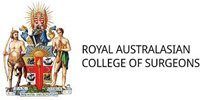Gallstones and Gallbladder Dysfunction
Gallstones are hard deposits of digestive fluid (bile) that develop in the gallbladder (a small, pear-shaped organ located on the right side of the abdomen just below the liver). Gallstones may be as small as a grain of sand or as big as a golf ball.
Gallstones develop because of an imbalance in the substances that make up bile. It is still unclear why these imbalances occur. However, it is believed that gallstones may form if bile contains unusually high levels of cholesterol, bilirubin or not enough bile salts.
Many people with gallstones do not have symptoms or are not aware that they have gallstones unless detected in a test carried out for another reason. If symptoms occur, they may include:
- Constant cramping pain that is sharp or dull which occurs in the right upper or middle upper abdomen. Gallbladder attacks usually occur after eating a large or fatty meal. The attack usually stops when gallstones move back into the gallbladder or pass into the small intestine.
- A high temperature
- Jaundice
Other symptoms include nausea, vomiting and clay coloured stools.
You are at risk of developing gallstones if you:
- Are a woman
- Are more than 40 years of age
- Are taking birth control pills or pregnant
- Have a family history of gallstones
- Are of American Indian or Mexican descent
- Have diabetes
- Are overweight or obese
- Are on a high calorie and low fibre diet and have recently lost weight very quickly
Diagnosis of gallstones is done with the help of tests which include an ultrasound of the abdomen, a CT scan of the abdomen, magnetic resonance imaging (MRI scan), endoscopic retrograde cholangiopancreatography (An ERCP can locate and remove the gallstone that has passed into the bile duct) and cholescintigraphy (diagnose abnormal contractions of the gallbladder or obstruction of the bile ducts). Your doctor may also order blood tests to look for signs of infection or inflammation of the bile ducts, gallbladder, pancreas or liver.
The usual treatment for gallstones is to surgically remove the gallbladder and the most commonly used technique is called a laparoscopic cholecystectomy (involves small incisions, which allow for a faster recovery). An open cholecystectomy (incision of about 10 to 18 cm long is made in the abdomen and thus requires more time to heal) was the technique used in the past, however it is not commonly performed now.
















